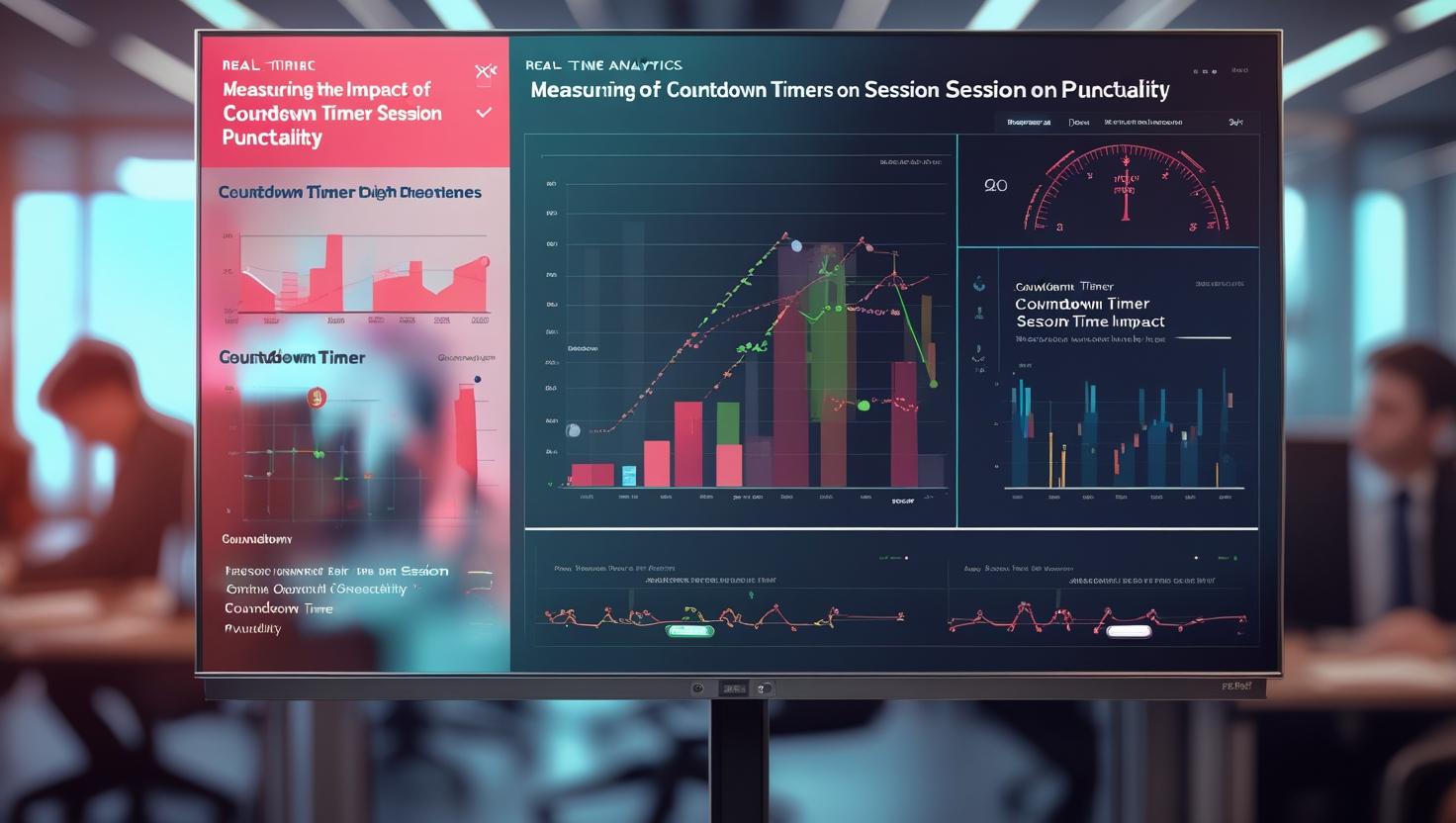Real-Time Analytics: Measuring the Impact of Countdown Timers on Session Punctuality

Real-Time Analytics: Measuring the Impact of Countdown Timers on Session Punctuality
Live events demand structure, and every minute matters. Whether you’re managing a global conference timer, internal webinar, or panel discussion, session punctuality directly affects attendee satisfaction and event flow. Yet, many event organizers overlook the powerful role that real-time analytics and Impact of countdown timers can play in managing time with precision.
Tools like remote-controlled countdown timers and smart, browser-based solutions allow organizers to discretely manage timing without disrupting the flow. With platforms like Let’s Time IT, countdown timers can be scheduled and adjusted at scale. This blog explores how real-time analytics helps measure the impact of countdown timers for sessions and how organizers can use data to improve time management.
Why Session Punctuality Matters in Live Events
- First impressions and flow: A delayed start can throw off the entire schedule, reduce engagement, and create friction for both speakers and audiences.
- Brand perception: Punctual event timer reflect strong operations and professionalism.
- Attendee experience: Timely sessions support transitions, networking breaks, and help participants stay focused.
Key Metrics to Track with Countdown Timer Analytics
- On-Time Session Start Rate
- % of sessions starting on or before scheduled time.
- Allows organizers to identify recurring delay patterns and fine-tune speaker prep.
- Average Overrun Per Session
- Track how often sessions exceed time limits.
- Helps flag speakers or formats needing tighter controls.
- Speaker Alert Response Time
- Measure how quickly speakers adapt after receiving time cues.
- Provides insight into the effectiveness of discreet reminders.
- Session Adherence Trends by Track or Room
- Multi-track events can vary in punctuality. Real-time dashboards can identify which areas need closer oversight.
- Multi-track events can vary in punctuality. Real-time dashboards can identify which areas need closer oversight.
- Cumulative Time Lost or Gained
- Aggregated impact of time saved or lost across all sessions.
- Powerful KPI for post-event reporting.
Using Dashboards to Visualize Countdown Timer Impact
Modern platforms like Let’s Time IT allow organizers to generate live dashboards and post-event reports. With a focus on discreet, browser-based scheduling, admins can control multiple rooms from a single interface while tracking session timing across:
- Speaker-specific sessions
- Panel discussions
- Live webinars
These dashboards provide:
- Real-time time tracking per session
- Alerts when a timer is paused, adjusted, or extended
- Visual overview of schedule adherence
Step-by-Step Guide: Implementing Timers with Let’s Time IT
Step 1: Creating an Event Timer
- Log in to Let’s Time IT.
- Navigate to the “Create” section.
- Set the Campaign Title, Campaign Description, and set the Expiry Date of Campaigns.
Step 2: Syncing Timers with Speaker Schedules
- Assign countdown timers for speakers.
- Configure automated notifications to remind speakers of their upcoming sessions.
Step 3: Enabling Discreet Countdown Displays
- Ensure speakers receive real-time countdown alerts without distracting the audience.
Step 4: Adjusting Timers Remotely
- Pause, extend, or shorten session durations dynamically.
- Use the centralized dashboard to manage transitions in real time.
By implementing these steps, event organizers can manage speaker transitions with ease and efficiency.
How Real-Time Analytics Improves Event-Wide Time Management
With built-in data tracking, countdown timer platforms allow organizers to:
- Identify peak hours when delays are most common
- Understand which session formats (e.g., panels vs keynotes) tend to overrun
- Correlate timer usage with satisfaction scores or feedback forms
- Export detailed reports for stakeholders and sponsors
Cross-Platform Compatibility: Adding Timers Across Platforms
To support seamless operations, event planners should ensure their countdown timers work across Google Chrome, Safari, Microsoft Edge, and are compatible with AV setups.
Additionally, timers should integrate with:
- Add to Calendar platforms (e.g., AddEvent, Google Calendar, Outlook)
- Event registration tools to sync session data
- Virtual meeting platforms like Zoom or Teams
This level of integration helps ensure every speaker, moderator, and ops team member stays on the same clock.
Best Practices for Optimizing Session Punctuality
- Rehearse with speakers and align them to timer etiquette.
- Use visual or color-coded alerts that communicate urgency without pressure.
- Schedule buffer time between sessions for transitions.
- Assign timer moderators for large or multi-room events.
Conclusion
Countdown timers for presenters are more than clocks on a screen—they’re time management tools backed by actionable analytics. From enhancing speaker accountability to creating seamless transitions, they help maintain professional standards and reduce the risk of overruns. Using real-time dashboards and KPIs, organizers can gain insights into speaker behaviors, session trends, and overall time health.
Whether you’re overseeing a high-stakes keynote or a tightly packed day of breakout rooms, integrating discreet, data-powered tools like browser-based countdown timers ensures you stay in control—on schedule, on brand, and on point.
In today’s data-driven world, measuring the impact of every minute counts.